On the 22nd of October 2023, at the age of 14 years and 361 days, Talia Younis broke Sam Kerr’s long-standing record for the youngest-ever A-League debutant by 49 days — before it was again broken by teammate Ischia Brooking just 14 days later.
Despite that, Younis has been given significant first-team minutes at such a young age, totalling 352 minutes across 11 games, including four starts, as Western Sydney Wanderers make a push for the playoffs, currently sitting just three points off the pace in eighth position. Having already earned appearances for Australia’s U17 and U15 sides, a future for the Matilda’s may well be on the cards.
In this tactical analysis and scout report, we will provide some analysis of the key tactics and characteristics that make Younis such an interesting prospect within her current role for the Western Sydney Wanderers.
Positioning and understanding of space
Younis has demonstrated her versatility in the Western Sydney side. With her making her debut as an attacking midfielder in Wanderer’s 3-4-1-2 shape, she has been used 48% of the time. However, more recently, her minutes have come as a central midfielder, where she has played as a junior for the Australian U15 and U17 sides. In the most recent game, a 2-1 win against the Newcastle Jets, she started up front as the lone striker in a 3-4-3 formation.
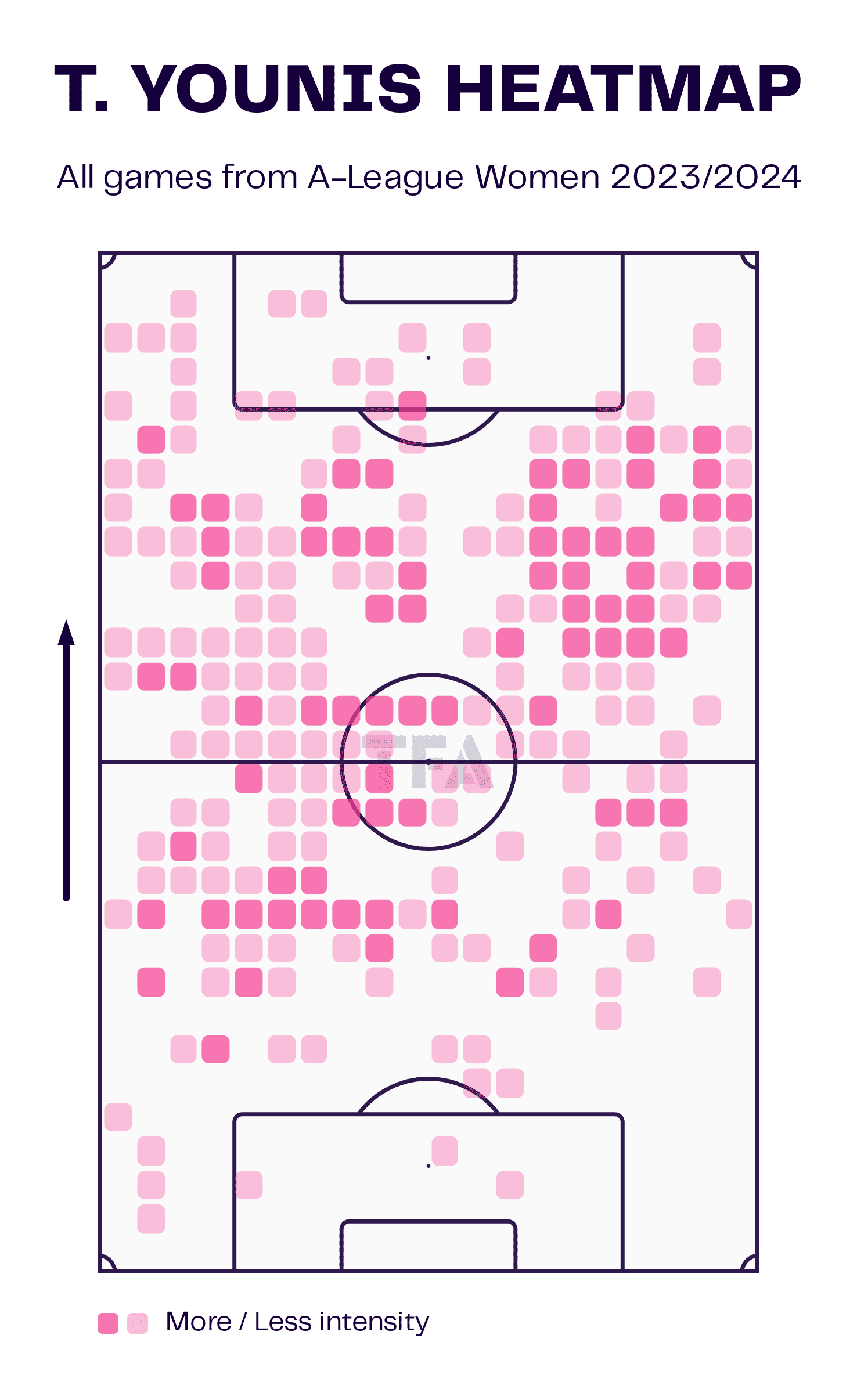
As you can see by Younis’ heat map, she covers a large proportion of the field with the intensity evenly distributed across it. This is down to the freedom she has been given to find pockets of space to receive the ball from teammates and try to combine with teammates and progress attacks. This is only possible due to her understanding of space and off-the-ball movement of a level far beyond somebody of her young age; we will outline some key examples in the rest of this section.
This understanding of space enables her to make quick and accurate decisions, enabling her to complete an average of 30.78 passes per 90 at a success rate of 75%. What is most impressive about this is that 33% of her passes are played forward, showing an intention early in her career to try to be positive on the ball.
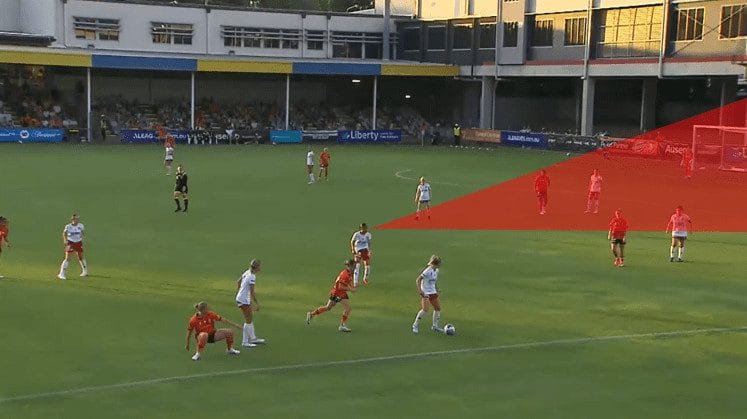
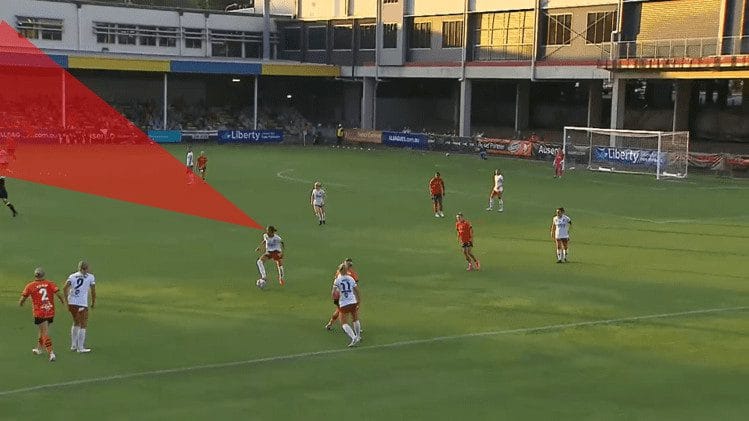

In this example, Western Sydney has just won the ball back from the Brisbane Roar, with the ball falling to the left wing-back Danika Matos. What is most impressive here is not that she has space to receive the ball, as that is largely down to her positioning from the defensive phase, but it’s her ability to scan the field and assess the situation quickly. She takes a quick scan over her left shoulder as soon as the ball is won back. Then, as the ball is played towards her, she takes a quick look over her right shoulder; she then identifies that there is nobody around her, so she is able to open her body and turn towards the attacking goal before executing a forward pass to teammate Cushla Rue.

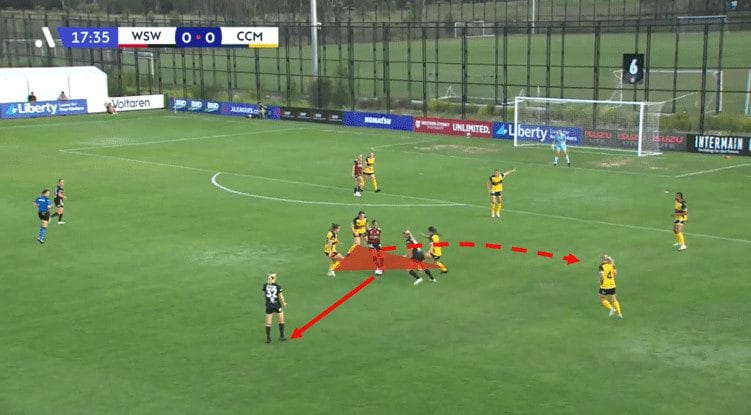
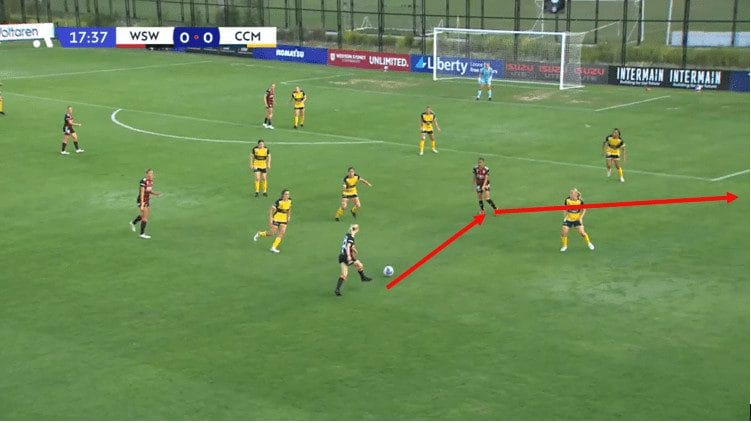
Here Western Sydney is up against the Central Coast Mariners. This shows how she can escape markers effectively and get involved in attacks multiple times, with the ball initially being played towards Younis by Rue on the right. Younis then takes four touches on the ball, which draws the attention of three Mariners players; despite having three players around her in a tight area, she can still get the ball to teammate Bethany Gordon.
Then, instead of giving up on the attack, Younis, always looking to pass and move into space to receive the ball again, sneaks behind the three Mariners players to get into space between the lines. She can receive the ball and play a quick pass out to Rue, who can put a cross into the box.
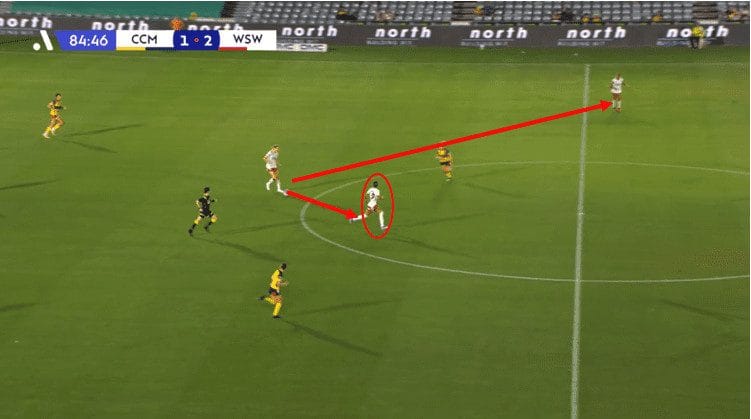
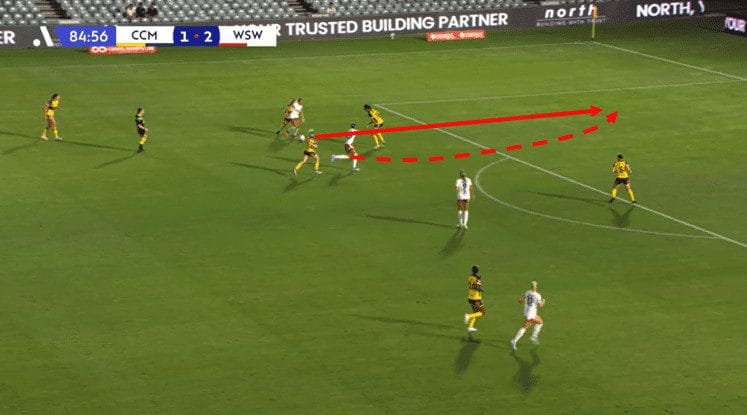
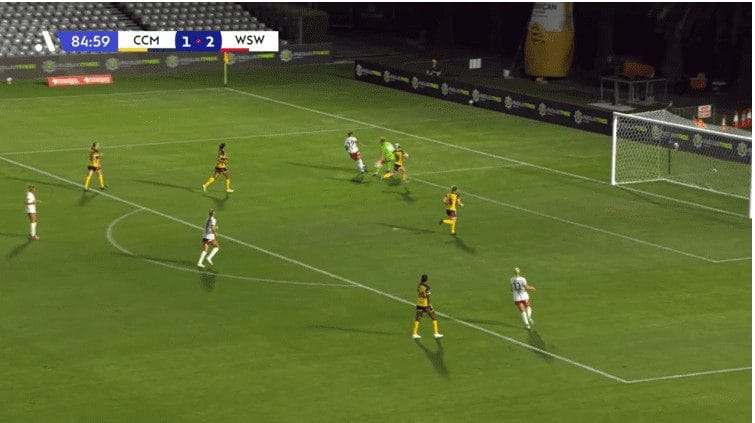
This example goes to show how Younis can be effective in supporting attacks. With the ball being won back deep in their own half by Western Sydney, the space has opened up for them to launch a counterattack. The first thing to note is the angle that Younis initially offers Holly Caspers to receive the ball and isolate the Central Coast player. However, Caspers opted to play the ball out to the left wing with Maliah Morris.
This is not the end of the play, however, with Younis continuing her run and actually making a run behind the opposition defence into the space left by the central defender engaged by Morris. Morris is able to get the ball. However, the goalkeeper comes off her line sharply and forces Younis to go wide, with Younis eventually playing a cross into the box.
Technical Quality
Although a strong understanding of space will hold you in good stead, it doesn’t mean anything unless you have the technical quality to execute consistently and effectively. Fortunately, Younis can have the composure on the ball of a seasoned veteran, execute high-end skills and operate in tight spaces. This section will outline some vital technical qualities that make Younis such an impressive prospect.
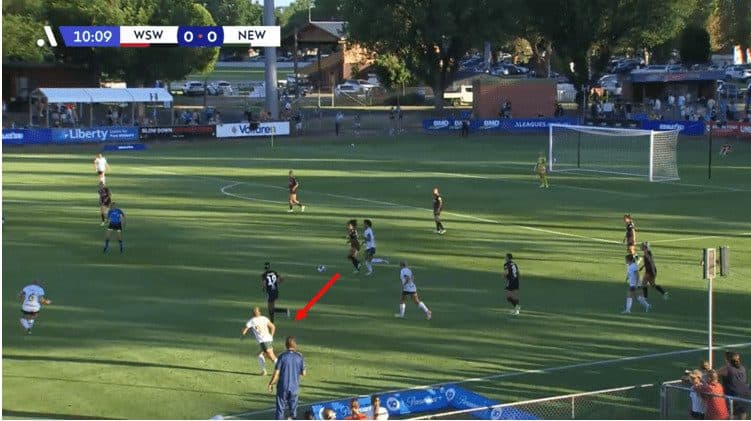
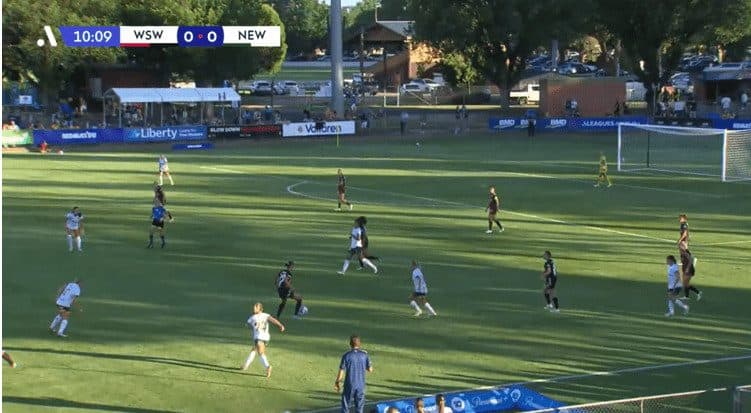
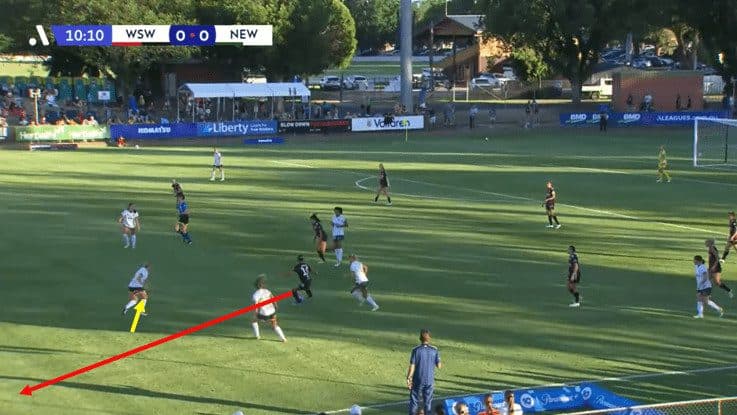
This is an impressive example of Younis’ technical quality, with the ball being played behind her, forcing her to turn her back to goal to bring the ball under control. However, what is most impressive here is Younis has ability to manipulate the Newcastle player with her eyes and body all facing towards the open side of the field, forcing the Newcastle player to turn towards this side of the field. However, Younis plays a disguised penetrating pass down the left side to Sophie Harding, who is able to drive forward into space and develop an attack.
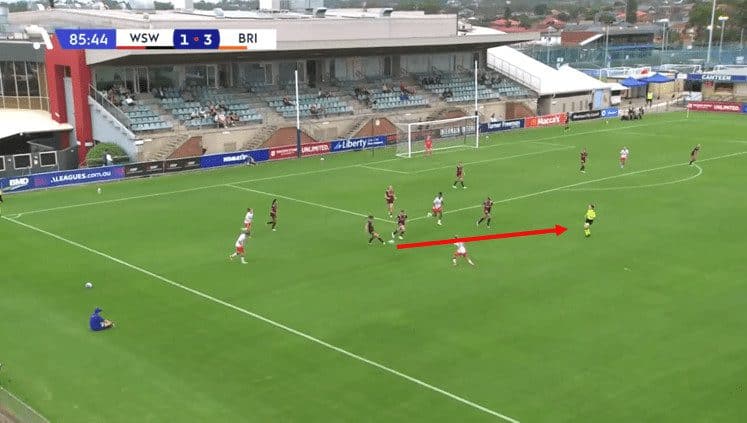
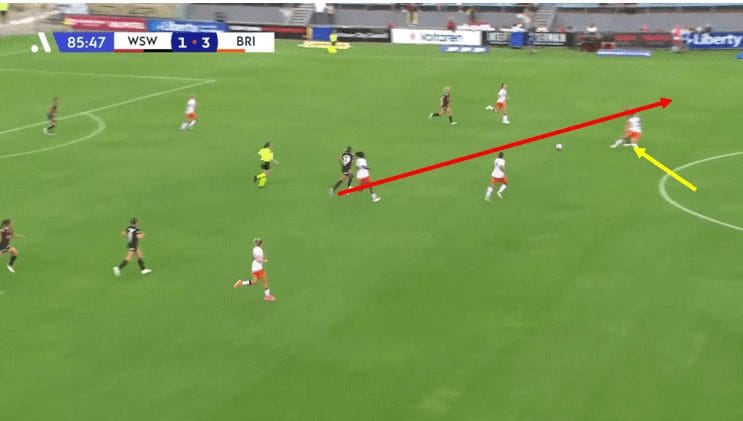
This pass here may just seem like a fairly simple completion, but what’s most impressive here is the ball placement. With the ball being won back deep in their own half, it is played into Younis, who lets the ball run in front of her so she can drive forward into space. However, Harding, the recipient of Younis’ pass, has a defender putting pressure on her from the inside, so Younis places the ball in front of Harding, which enables Harding to let the ball run and turn her opponent. It’s these sorts of small details which make Younis an interesting talent.
However, Younis’ ability on the ball is not purely with her passing ability. She also possesses impressive calmness and comfort on the ball. This enables her to play in tight spaces under pressure and progress attacks with the ball at her feet. Throughout the season, she has been averaging 2.8 dribblers per 90 at 25%. However, that is only half the story, with a lot of the impressive moments Younis has shown coming from evading pressures as opposed to raw one-on-one dribbles.
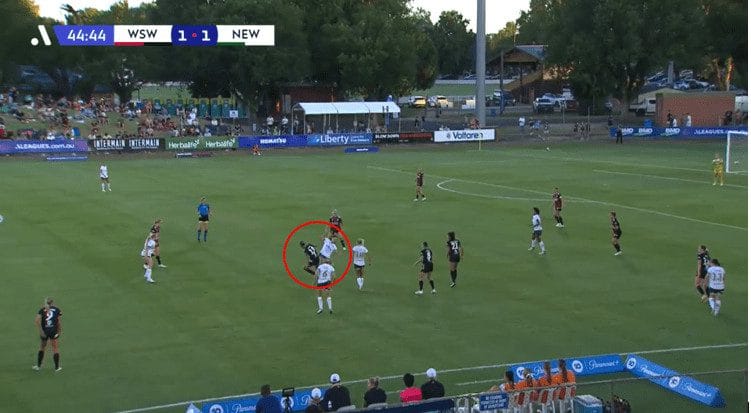
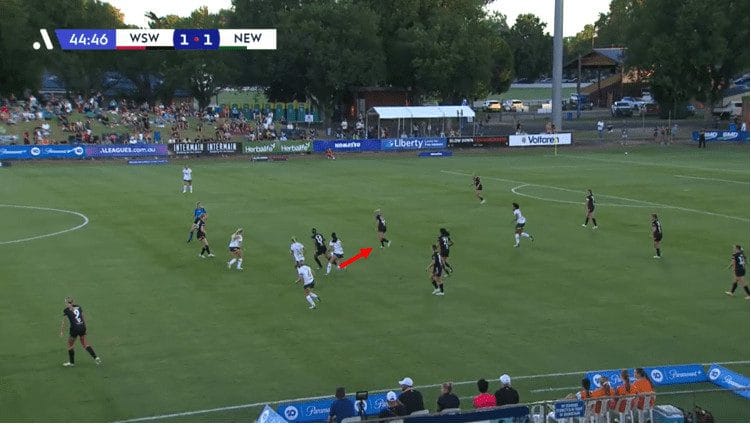
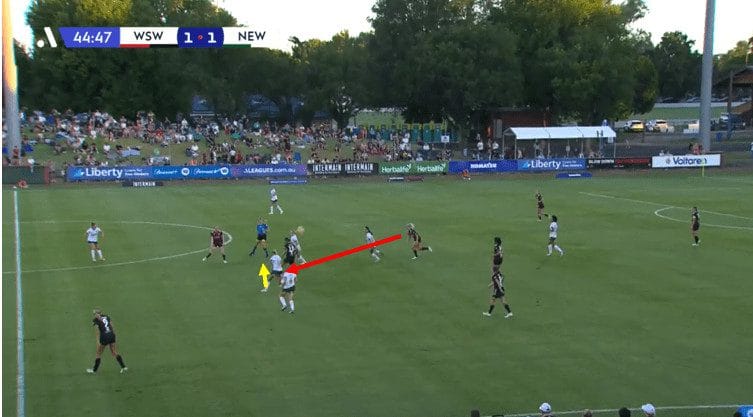
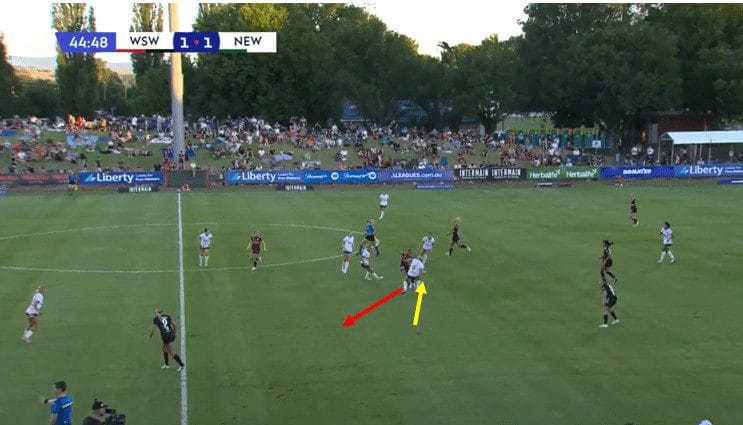
This is an example of Younis’s quality when playing under pressure from opponents. With the ball bobbling around in the midfield, Younis puts in a solid tackle to win the ball for her side before playing the ball into teammate Matos. Younis then receives the ball back from Matos with an opponent putting pressure on her back. However, Younis just calmly shifts the ball to her right side and turns away from the danger, only to have another Newcastle player in her face. However, brilliant footwork enables her to lift the ball over the flailing leg of her opponent and get the ball into space. However, she was fouled in the process, and the attack was brought to a halt.
Defensive engagement
A further aspect that is impressive about Younis is her engagement in the defensive side of the game. She was involved in 6.34 defensive duels per 90, with a success rate of 61%. This is eleventh among all attacking midfielders and thirty-first among all attackers. Despite her young age, this is down to the intention to be strong and physical in the tackle and with good physical maturity.
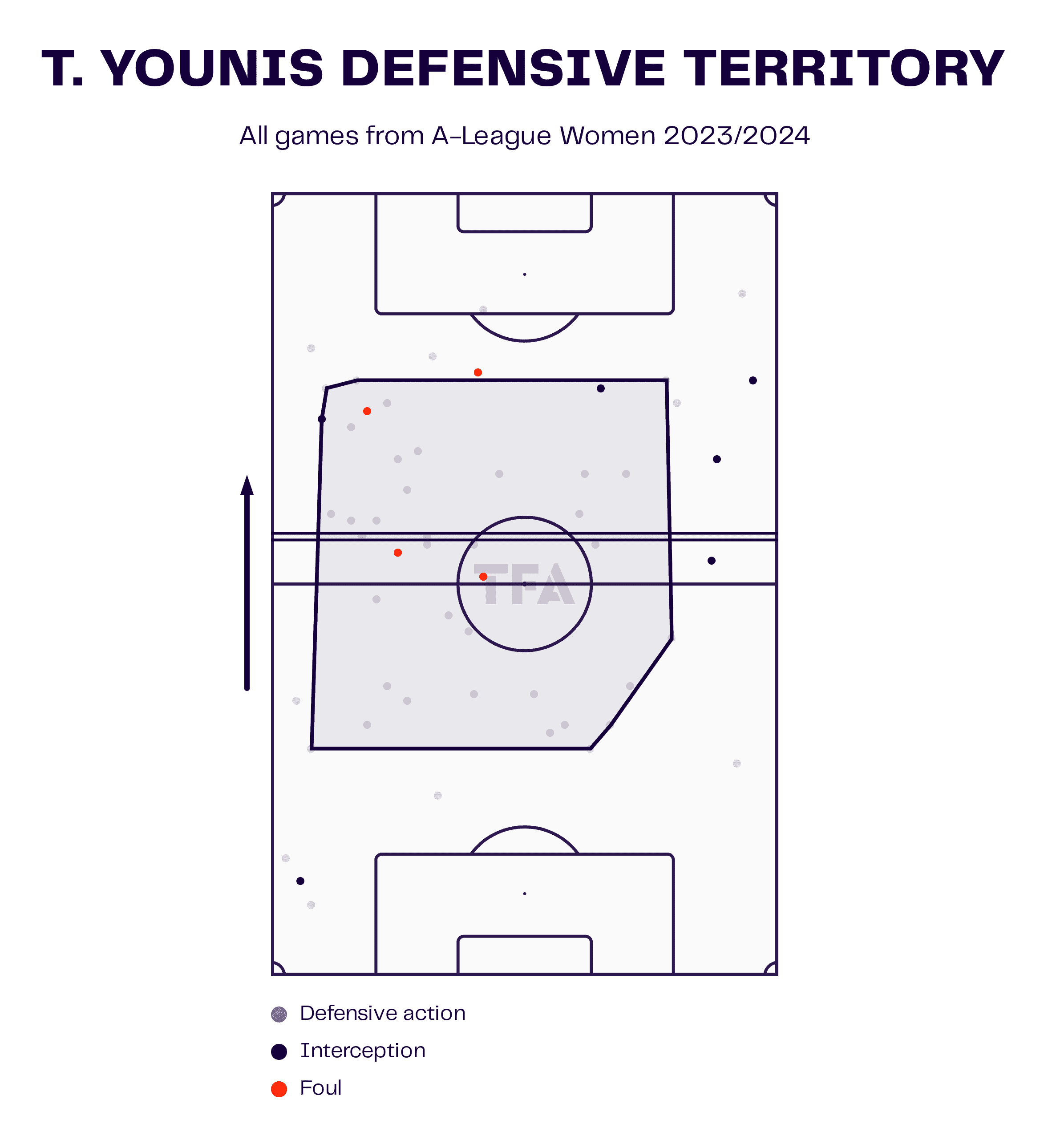
In addition to her excellent levels of success in defensive duels, she has also been completing 3.54 interceptions per 90 and totalling 8.38 total ball recoveries per 90. This makes her a helpful asset in defensive shape, high pressing and potentially the ability to be vital in transitions, particularly when combined with her ability to play with the ball at her feet. Here, we will outline some key moments that show off her defensive attributes.
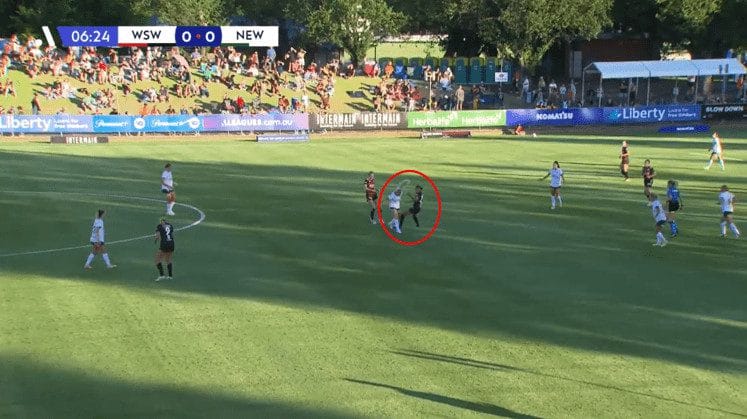
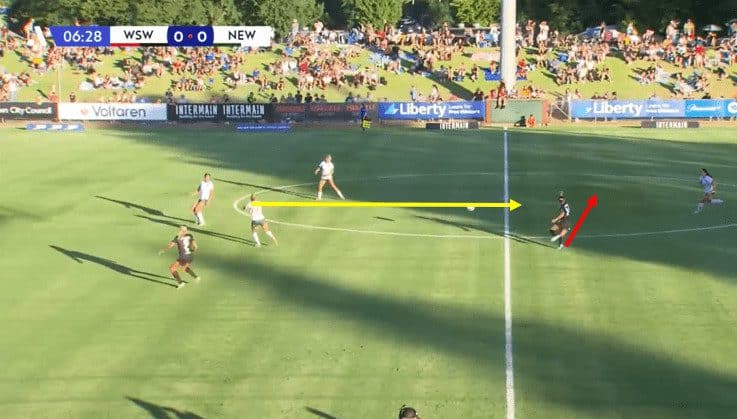
This is an example of the effort that Younis puts into the defensive phase, with her initially getting out to put pressure on the Newcastle player, who was receiving the ball with her back to the goal. As such, she is able to prevent her opponent from turning and wins the ball back for the side, allowing her teammate to play a long ball over the top towards Harding. However, this ball is intercepted by the head of a Newcastle player. With the ball being played back into the midfield area, Younis can sharply react to the loose ball and make a pivotal interception to keep the attack moving forward.
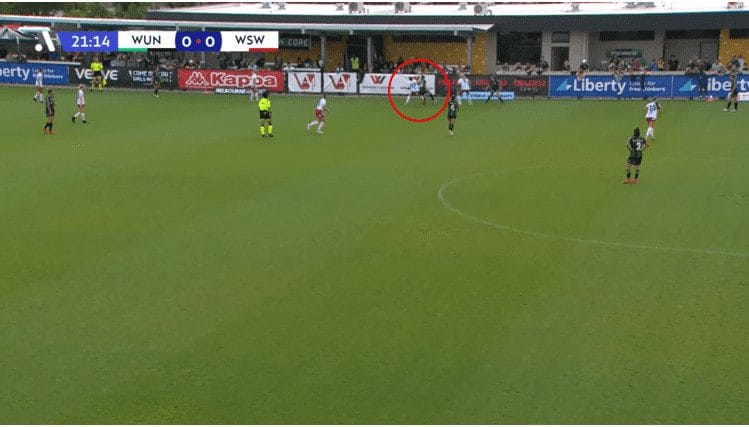
We added this example here as it shows off Younis’ ability to be an important piece of Western Sydney’s rest defence. With her ability to track and mark opponents effectively, she follows her Western United opponent out wide. Younis then puts pressure on her from behind, prevents her from turning and forces them to play an awkward off-balance ball to nothing, which is recovered by a Western Sydney teammate.
This shows that even when Younis is not being effective at getting ball recoveries, she can still demonstrate an impressive understanding of her role within the defensive phase and manipulate opponents into forcing passes and making mistakes.
Areas for improvement
Despite being such an impressive young prospect, Younis is still raw, and in this section, we will outline some ways that she can develop moving forward and make her an even more dangerous player.
The first aspect we are going to look at is her ability to be more aggressive in the final third. This was noted several times when she received the ball in dangerous positions and was able to turn and play forward balls; however, she opted to play a simple option and retain possession instead.
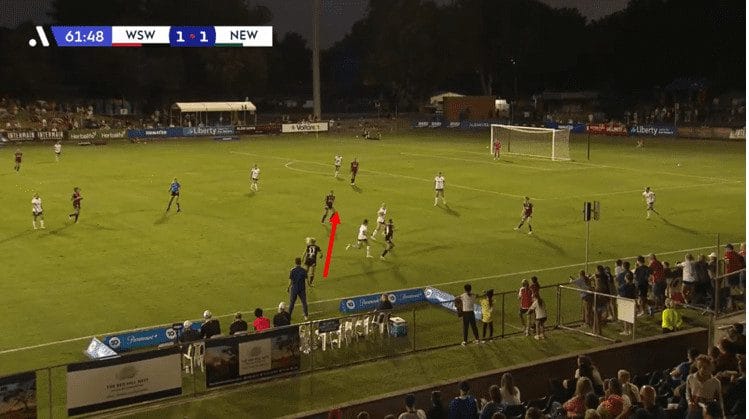
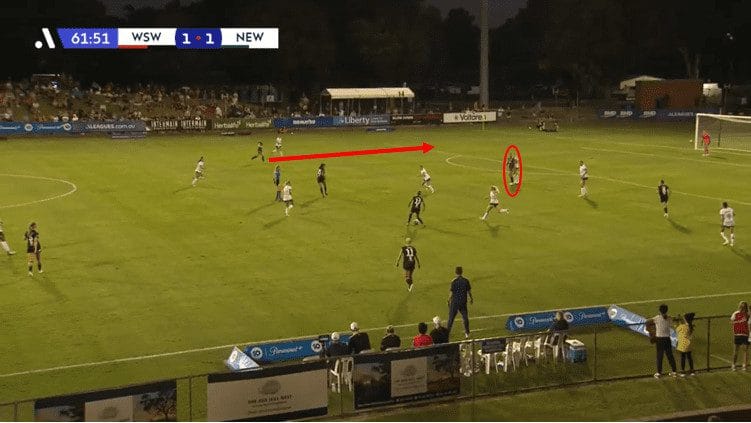
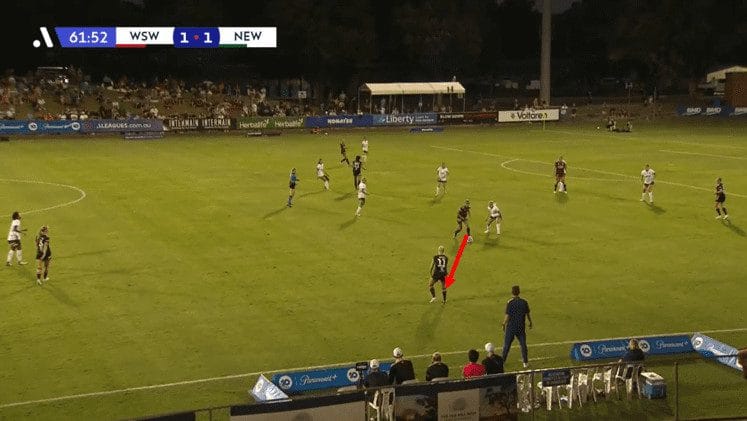
In this example, she receives the ball on her back foot and then turns around. However, with nobody around her, she could not receive on the front here and play her first touch forwards into the space, saving her the half a second it takes to turn, which could make all the difference.
Then, once she does turn, there is space to attack behind the Newcastle wingback. Could she utilise the centre forward as a link to get the ball out there or try to play a ball into the space herself? However, instead, she does a full 360 and plays the ball back to her teammate.
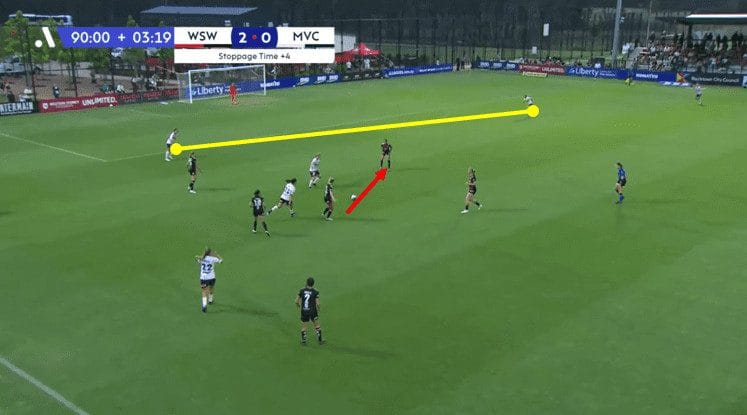
Here is an example of where Younis could be more aggressive in the final third, with the ball being won high up the field. Younis is in space to receive the ball. However, she is caught ball-watching and hasn’t looked behind as she has lots of space to turn and drive at goal, particularly with the disconnect in the Melbourne Victory backline. However, instead, she opts to play the simple ball back to her teammate, and Melbourne is able to get back into their shape.
The other aspect that Younis can develop is confidence in using her left foot. With a versatile right foot where she is able to play flick passes, disguised passes, long passes and outside of the passes, you can understand why she would be more confident with her right. However, developing her left foot would enable her to be even more efficient in possession. She demonstrated on several occasions the ability to use her weaker left foot; however, she often moves balls onto her right foot instead of playing a quicker ball on her left foot.
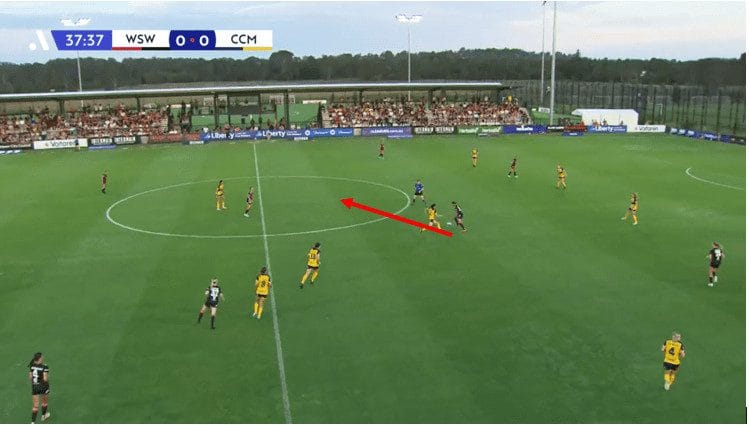
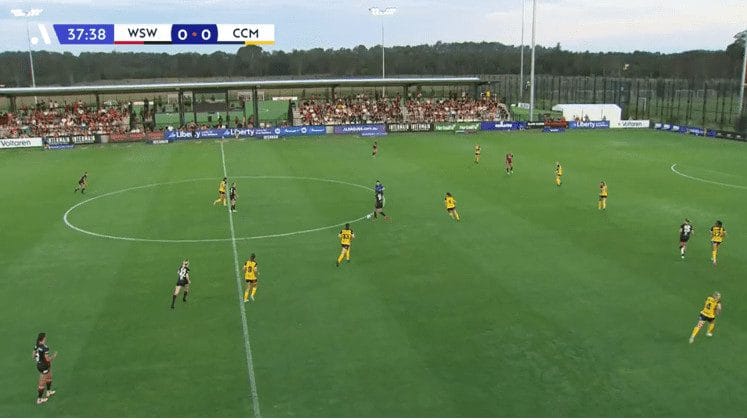

On this occasion, she receives the ball with her back to the goal, is able to turn towards the left flank and has the chance to play a left-footed ball to teammate Matos. However, instead, she opts to shift the ball onto her right foot and loses 0.8 seconds and some of the momentum of the attack is lost.
Conclusion
As you can see from this scout report, Younis is an exciting prospect with a lot of highly impressive qualities for a fifteen-year-old in her first season of senior football. Her ability to understand space and have composure on the ball of a far older player undoubtedly makes her a player to watch out for in the future.
With her ability to only progress in the future, and if she can develop those small details, the future of Talia Younis is sure to be a bright one.






Comments